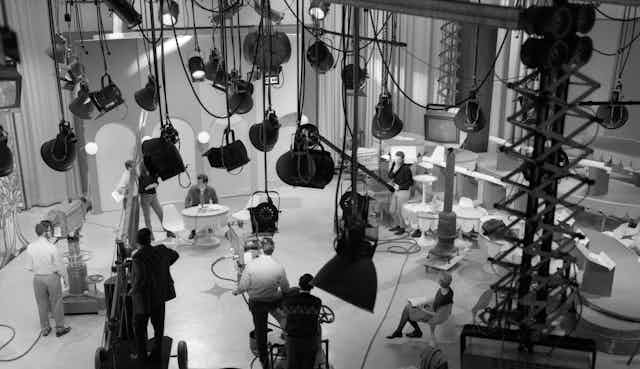Men have had their empires. Everyone else has had the hushed, forgotten, erased or overlooked stories of the scientists, witches, explorers, artists, writers and scholars who didn’t fit the mould.
In the field of media studies, there are researchers, academics, journalists and public intellectuals who, often due to their gender, race or politics, have been ignored and marginalised in favour of recognising the “founding fathers” of the field.
Finally, these ghosts are making their way back into academic books, articles, teaching materials and popular culture. Our new book, co-edited with Carol Stabile, reclaims the original ideas, essays and scholarship of 19 women and provides an introduction by experts in the field, along with samples of their work. From that 19, here are three we think are particularly worth knowing about.
Film theory

Mae D. Huettig from Los Angeles was the first economist to explain how the US film industry functioned as a vertically integrated factory that was less about dreams and glamour and more about vulgar capitalism. Her book, Economic Control of the Motion Picture Industry: A Study in Industrial Organization (1944), revealed how Hollywood movie studios produced films cheaply and used their own network of cinemas to screen them.
Huettig argued that Hollywood studios, just like automobile or coal factories, used the same economic model as any industry – dominate the competition and corner the market. Her work ultimately became a part of the 1948 federal case, the Paramount Decree. This landmark case addressed the practice of film studios owning cinemas and controlling their film distribution. The decree ended the vertically integrated Hollywood studio system. Production studios could no longer own the cinemas that screened their films, and cinemas were no longer beholden to one studio only.
After a few semesters teaching at the University of Pennsylvania’s Wharton School and working at a think tank, Huettig became an activist. Following the 1965 Watts rebellion, a civil rights uprising in Los Angeles, she trained minority youths on how to use film to monitor police misconduct. She also campaigned against school racial segregation, police abuse and corruption.
The importance of images
Romana Javitz from New York was the first librarian to develop an organised, browsable collection of pictures that anyone with a library card could check out from the New York Public Library (NYPL).
As the NYPL superintendent of the picture collection between 1928 and 1968, Javitz and her staff collected as many items as they could by cutting out images from old books and magazines. These included photos, paintings, ads, pop art and images of everyday people, places and things.

Essentially, Javitz foresaw the image-based browsing that search engines provide today. She also anticipated their commercial control but believed that images are an important public resource. In speeches, pamphlets and grant applications, Javitz acted by urging libraries to steward image collections.
The media and civil rights
Shirley Graham DuBois from Indiana was an activist, award-winning novelist, editor, and the first black female dramatist. In 1931, she produced the first black opera, Tom-Tom: An Epic of Music and the Negro. Graham was committed to using literacy and popular media as tools to free people from race and sex discrimination, whether Black, white, or Native American.

During the second world war, Graham worked on military bases giving courses on journalism and photography for black soldiers, helping them to produce their own literary magazines. She was founded the journal, Freedomways: A Quarterly Review of the Negro Freedom Movement in 1961. It provided a rare forum for discussing discrimination from the early years of the civil rights movement forward.
In 1961, Graham’s background in theatre and education caught the attention of the Ghanaian president, Kwame Nkrumah. He asked her to develop the nation’s first public noncommercial, indigenous television network to promote literacy countrywide. Graham and Nkrumah were forced to leave Ghana after a military coup in 1966, before the network was completed.
Digging deeper
The contributions of these women, and the 16 others featured in our book, range broadly from film economics, advertising and library science, to progressive anti-racist journalism, theatre, audience researchers, and more. They show us that there has always been the possibility for progressive, inclusive, intersectional, anti-capitalist, anti-racist and gender-equal thought and action.
Our goal is not to create a “new” canon of media studies. Instead, the goal is for academics and lecturers to use our book in their classes to track their own tradition taking different, more inclusive, and radical routes that could provide fresh insight into the world.
In fact, alongside media and communication scholars such as Carolyn Birdsall and Elinor Carmi, the book questions the need for a canon altogether.
Other researchers and students need to get their hands dirty, too. They need to dig in archives, read original works and examine dismissed ideas that go against the grain. It is likely that researchers in any field will find important women (and their ideas) hidden as typists, transcribers, or editorial, lab, field, or research assistants. Sometimes they may be left out altogether; all that may be left is their name on a grant application. Finding them takes time and effort. But the results are worth it.

